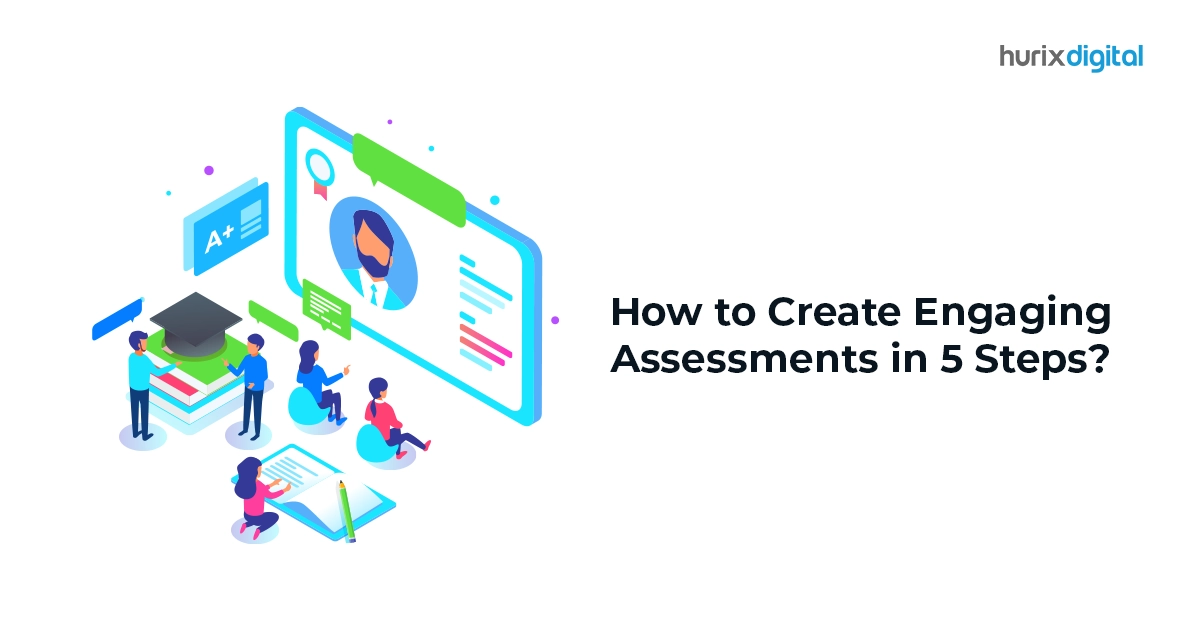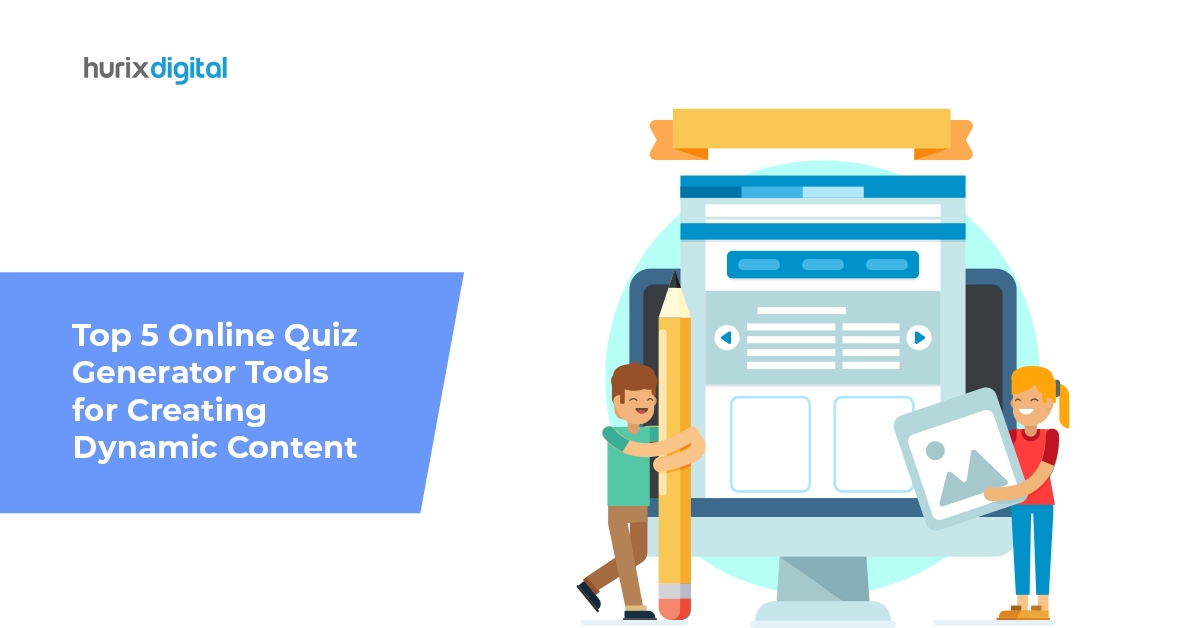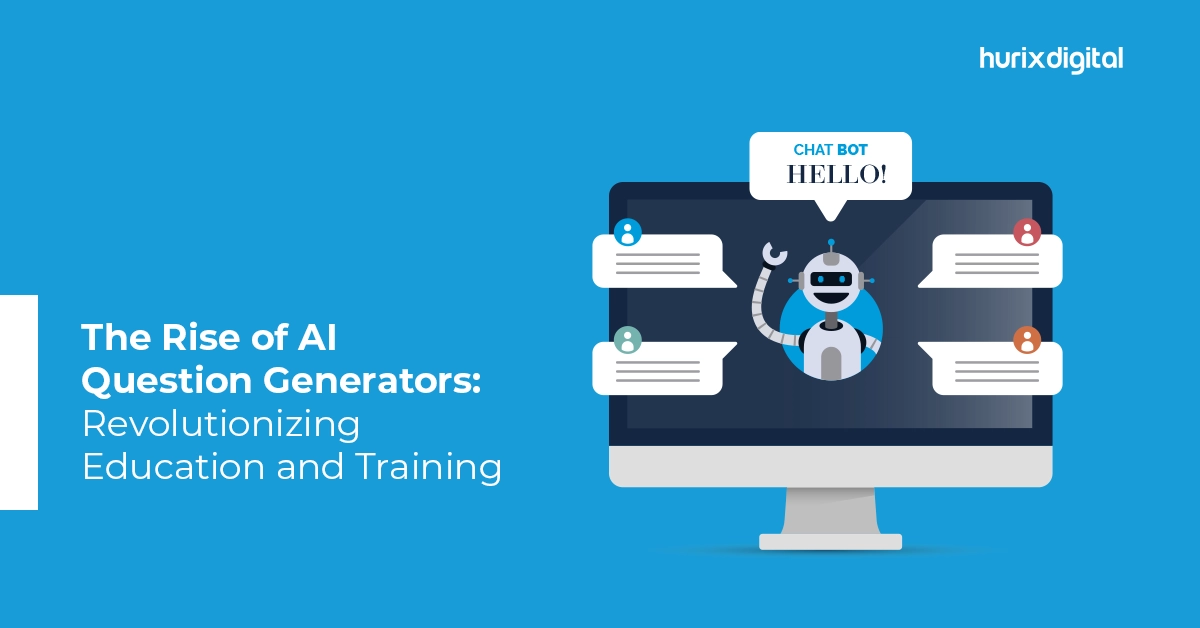
How to Create Engaging Assessments in 5 Steps?
Summary
This piece thoroughly explores the process of creating engaging assessments using innovative question generators. It highlights key steps for optimal results.
Questioning, in the academic context, is a vital process for promoting elaborate and deep thinking among learners.
The different question types in assessments compel learners to dive deep into their acquired knowledge base to come up with logical answers that showcase the extent of their understanding of specific subjects.
The engagement quotient of assessments should be high to motivate learners to respond wholeheartedly to questions so that knowledge deficiencies can be mapped adequately. Question generators, in this regard, serve as invaluable tools for educators, enabling them to craft a diverse range of questions that challenge and inspire learners.
This post sheds light on using a suitable question generator for creating engaging assessments. Read on!
Table of Contents:
5 Proven Steps for Creating Engaging Assessments with Question Generators
Assessment is a critical aspect of learner experience. It offers a tangible overview of the learner’s academic progress and defines the areas where better knowledge enrichment is required.
Below are the steps for creating engaging assessments using a question generator:
1. Gather the Learners’ Voice
The assessment can engage learners only when it resonates with their intellectual growth preferences. This calls for actively seeking their voice before crafting questions. Learners get the scope to reflect on their past evaluative experiences when providing feedback. This, in turn, bolsters their critical thinking abilities.
Learners can provide their suggestions through various forums, such as MS Forms, MS Teams Chat, Zoom meetings, emails, and Moodle discussion forums.
The questionnaire designed to solicit learners’ perspectives should assess:
- Their comprehension of assessment standards and objectives.
- The benefits derived from formative tasks and how they contribute to learning.
- Whether they perceive a suitable balance between summative and formative assessments.
- Satisfaction with the distribution and variety of assessment questions, ensuring a comprehensive evaluation of their learning.
- The coherence of evaluative patterns across learning units.
- Their desire for increased variety in question types.
This is an excellent framework for involving learners in the assessment process. By gathering their feedback and insights, educators can tailor assessments to better suit their needs and preferences, ultimately enhancing engagement and learning outcomes in the long run.
Also Read: Top 10 AI-Based Assessment Tools for Higher Education in 2024
2. Move Away from Snapshot Assessments
Conventional assessments are discrete, i.e., they offer snapshots of learners’ capabilities at any given point in time. They can reveal the learners’ knowledge at that point but can’t demonstrate their progress in learning.
Change defines learning. This can be a change in learners’ mindsets or a change from what they could do with supervisors’ assistance to what they can do alone. For this, assessments need to be dynamic so that they can measure changes over time to facilitate more nuanced evaluation.
Artificial Intelligence is making assessments more engaging with techniques that offer a continuous and holistic view of learners’ performance and actual learning. The AI question-creation process blends digital interventions and evidential evaluation with conventional quizzes, essay-type questions, etc.
3. Leverage the Potential of EAPs
Question design can be taken to the next level with EAPs (Electronic Assessment Platforms).
With EAPs, evaluators can post questions that are difficult to present on paper. Questions can be incorporated with multimedia elements and can be presented in a random or pre-defined manner. Learners can be offered contextual and personalized feedback rapidly.
EAPs’ sophisticated mechanism offers incisive insights into the learners’ behaviors at a subliminal level. Evaluators can measure and classify the efforts employed by learners during the test.
The metacognitive information processing capabilities and strategic leveraging of acquired skills by learners can be ascertained through the interpretation of answers and revisional peculiarities demonstrated by them on EAP.
The speed, accuracy, and rapid guessing ability of examinees can be assessed in real time. Instructors can scientifically comprehend the performance of examinees in different contexts, especially those involving complex problem-solving.
4. Infuse Uniqueness in Questions with an AI Question Generator
AI question generators enjoy numerous advantages when it comes to creating engaging assessments. These include:
- Customization of questions based on the unique profiles of individual learners.
- Moderation of difficulty levels of questions to render them challenging yet less overwhelming.
- Generation of questions in multi-choice, essay, and short answer formats automatically occurs through data from the questions’ bank.
- Availability of a question bank dashboard to help evaluators with data-underpinned insights for creating effective questions dynamically.
- Ease of creating questions quickly and efficiently from any location.
The AI-powered multiple choice test creator can create unlimited unique question sets on the same subject and with similar difficulty standards with a few clicks.
5. Follow the ‘Stealth Assessment’ Approach
Assessments become more engaging with the stealth approach. With this method, data is collected automatically in the background. The creative, intuitive, and adaptive quotients of learners and their conscientiousness are measured through construct maps.
As the learners upgrade their capabilities, analytical thought processes, and calculated decision-making ingenuity progressively, the collected data reflect this. The construct map is accordingly updated, resulting in a dynamic assessment of learners.
Latent knowledge can also be estimated by setting questions using the BKT (Bayesian Knowledge Tracing) model, which can be made more effective with recurrent neural networks in deep learning. The assessments can precisely gauge if the learner has mastered a knowledge component and can apply it confidently and independently.
In addition to traditional methods, learners can be evaluated on their soft skills, such as creativity, problem-solving, and collaboration. The stealth assessment approach seamlessly integrates these aspects into the evaluation process, providing a comprehensive understanding of learners’ progress.
Also Read: 10 Best Digital Assessment Tools That Are Useful for Both Students As Well As Teachers
Way Forward
Assessment is an integral part of knowledge acquisition. If it is not discreetly devised, teachers and learners can suffer from frustration and stress.
Meaningful, engaging, and accessible assessments must be created by leveraging modern technologies to gauge the depth of understanding of learners. Such assessments allow all learners to participate inclusively, irrespective of their preferences, backgrounds, and abilities.
Hurix Digital has proven excellence in developing engaging assessments that are in sync with the changing learning ecosystem and help in the identification of areas where learners require additional support.
We possess unparalleled expertise in AI, neural networks, and machine learning. You can strategically partner with us to generate assessments based on the philosophies of adaptive and personalized learning, underpinned by data-driven education.
Connect with us now!

Vice President – Content Transformation at HurixDigital, based in Chennai. With nearly 20 years in digital content, he leads large-scale transformation and accessibility initiatives. A frequent presenter (e.g., London Book Fair 2025), Gokulnath drives AI-powered publishing solutions and inclusive content strategies for global clients






